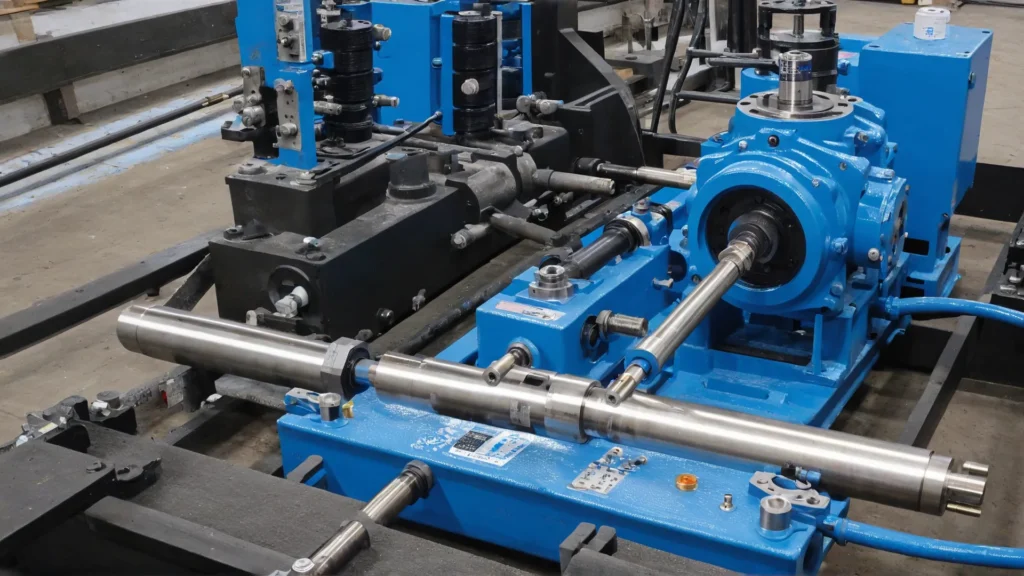Testing hydraulic cylinders is crucial for ensuring the proper functioning and longevity of hydraulic systems.
This article will guide you through the process of testing a hydraulic cylinder, covering essential steps and techniques.
Why Pressure Test A Hydraulic Cylinder?
Pressure testing of hydraulic cylinders is a reliable way to verify the function of hydraulic systems. Insufficient pressure indicates problems with internal parts of the system, such as faulty or incorrectly sized seals, or problems inside the cylinder.
Pressure testing allows us to diagnose these potential faults and ensure the proper functioning of the hydraulic system. This testing method is simple and effective and is an integral part of hydraulic system maintenance.
Only through pressure testing can problems be discovered and resolved in a timely manner, avoiding greater damage and more expensive repairs.
Therefore, it is essential to regularly pressure test hydraulic cylinders to extend the life of the equipment and improve work efficiency.
How To Pressure Test A Hydraulic Cylinder
Pressure testing hydraulic cylinders is a critical step in ensuring your hydraulic system is functioning properly. By performing this test regularly, you can identify potential problems before they occur, preventing system failures and costly repairs.
Here are the steps on how to perform a hydraulic cylinder pressure test:
1.Preparation:
- Make sure the work area is safe and clean.
- Wear appropriate personal protective equipment, such as safety glasses and gloves.
- Prepare the required tools, including a pressure gauge, test hose, and adapters.
2.System inspection:
- Visually inspect the hydraulic cylinder and connections for obvious damage or leaks.
- Make sure all connections are tight and not loose.
3.Connect the test equipment:
- Connect the pressure gauge to the hydraulic cylinder’s oil inlet.
- Make sure all connections are tight and will not come loose when pressurized.
4.Venting:
- Slowly pressurize the system while operating the hydraulic cylinder to exhaust any air that may be present.
- Repeat this process until there are no air bubbles in the system.
5.Pressure test:
- Gradually increase the system pressure until the manufacturer’s specified test pressure is reached.
- Maintain this pressure for a period of time (usually 5-10 minutes).
- Observe the pressure gauge to check for any pressure drop.
6.Check for leaks:
- While maintaining pressure, carefully inspect all parts of the hydraulic cylinder for signs of leaks.
- Pay special attention to seals and connection points.
7.Release Pressure:
- After the test is complete, slowly release system pressure.
- Do not release pressure suddenly to avoid damage to equipment or personal injury.
8.Record Results:
- Record your observations during the test in detail, including maximum pressure, hold time, and any abnormalities.
9.Analysis and Follow-up:
- If any problems are found, such as failure to maintain pressure or obvious leaks, further diagnosis and repairs are required.
- If the test passes, record the results for future reference.
10.Cleanup and Storage:
- Disconnect all test equipment and store them properly.
- Clean up the work area and ensure safety.
Conclusion
Properly testing hydraulic cylinders is essential for maintaining the efficiency and reliability of hydraulic systems. By following these steps, you can identify potential issues early and prevent costly breakdowns.
Remember to always prioritize safety and consult the manufacturer’s guidelines when testing hydraulic components.If you are unsure about any step, consult a qualified technician.
